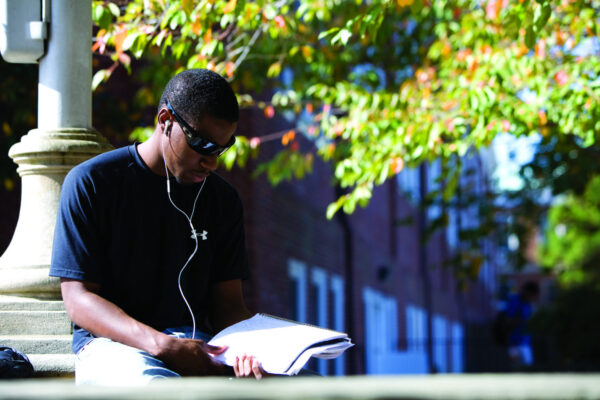ACE2019: Designing Strategies to Support the Mental Health of Students
One out of five students on our campus have a mental health condition. And at some point in the past year, three out of five students felt overwhelming anxiety, two out of five felt too depressed to function, one out of three binge drank regularly, one out of 10 had serious thoughts of suicide, one out of 50 attempted suicide, and 1,400 students died by suicide.
These startling statistics were shared by Nance Roy, chief clinical officer of the JED Foundation, to frame the ACE2019 panel conversation about the mental health concerns of different student populations.
Sofia Pertuz, senior advisor of JED Campus and Diversity & Inclusion, spoke to the audience about students of color and their unique concerns. Pertuz cautioned against a “one size fits all” approach to mental health because this approach doesn’t address all students’ unique concerns—especially students of color. She emphasized that some students of color have been taught to be self-reliant and that many may take time to build trust with a network on campus, so reaching out for help around mental health can be a struggle.
Matthew McEvoy, senior director at Morneau Shepell, agrees that a one-size approach to addressing student mental health is particularly not effective for international students, whose unique needs can vary by country of origin. Students from China, for example, experience personal stigma at three times the rate of their domestic peers. International students from Asian and North Africa will present higher levels of distress compared to domestic students in social anxiety, depression, academic distress, and eating concerns.
Maren Greathouse, director of the Tyler Clementi Center, emphasized one of the unique issues with addressing the mental health of GLBTQ students, is that they can be an invisible population on campus. She cited recent research by her center that shows students who identified on the trans- or queer spectrum had higher disparities across all mental health concerns than students who did not identify with these two groups. For example, 52 percent of transgender incoming freshman self-disclosed they had been diagnosed with a psychological disorder compared to 11 percent of cisgender first year students.
The panel went on to discuss different strategies campuses can employ that may assist different populations with their mental health and emotional well-being.
Campuses need to build broad social support for students and work to help integrate students so that they feel a sense of belonging. GLBTQ students and students of color may struggle with complexities of identity. Pertuz and Greathouse emphasized the importance of having staff in the counseling center trained on identity development and its complexities.
Pertuz advised attendees to utilize the Equity in Mental Health Framework to assist in addressing students of color and their mental health concerns. The framework, developed by the JED Foundation and The Steve Fund, offers recommendations and practical implementation strategies for higher education. The recommendations are aimed at reducing stigma as well as structural changes that can help students of color thrive. Pertuz highlighted a few recommendations from the framework, including actively recruiting, training, and retaining a diverse and culturally competent faculty and professional staff, especially in the counseling center.
Both students of color and international students benefit from culturally responsive counselors. McEvoy talked about how effective it is for international students to speak to someone who understands their culture and language. He recommended having peers talk to peers about mental health concerns, which is even more effective when the student is an international student from the same country.
Peer outreach is also important to GLBTQ students who are developing their own identity and may struggle with mental health. Greathouse recommends finding peers who have positive identities around sexuality and gender, which can help students who are struggling. Peers can help students not internalize stigma and seek assistance.
The panelists agreed that campuses need to change the narrative around mental health to be more holistic. Two underlying principles can assist a campus in making this shift. The first is that the campus needs to take a public health approach to mental health. The second is that while the health and counseling staff are important partners in addressing mental health on campus, it is a campus-wide responsibility. Faculty and staff are partners in helping students feel like they belong, and they play an important part to connecting students to resources.
Campus leadership plays a key role in helping move the move the needle on long-term, long-lasting systemic change that will serve all students on campus. The college or university president and senior leaders set the tone to help students feel like campus communities care about their well-being.
—Hollie Chessman

If you have any questions or comments about this blog post, please contact us.


